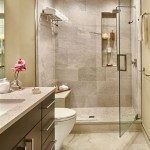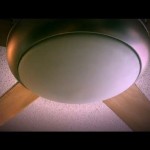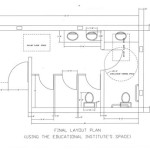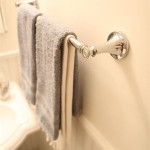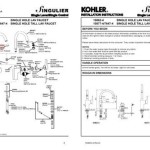How to Get Black Mold Off Bathroom Walls
Black mold, scientifically known as Stachybotrys chartarum, is a common issue in humid environments like bathrooms. It thrives in areas with high moisture levels, poor ventilation, and lack of sunlight. The presence of black mold can lead to various health problems, including respiratory issues, allergies, and even neurological problems. Therefore, it's crucial to remove black mold from bathroom walls promptly and effectively.
Removing black mold involves a multi-step process that requires proper safety precautions and cleaning agents. Here's a comprehensive guide to help you eradicate black mold from your bathroom walls:
1. Preparing for Mold Removal
Before starting the cleaning process, it's essential to prepare the area and protect yourself from mold exposure. Here are some essential steps:
- Wear protective gear: Wear a respirator mask to prevent inhaling mold spores, gloves to protect your hands, and goggles to shield your eyes.
- Open windows and doors: Improve ventilation by opening windows and doors to allow fresh air circulation and reduce mold spore concentration.
- Isolate the area: If the affected area is extensive, consider isolating it using plastic sheeting and tape to prevent mold spores from spreading.
- Remove loose materials: Remove any loose or damaged materials, like wallpaper or paint, to expose the mold-infested area.
2. Cleaning the Mold
Once the area is prepared, you can start cleaning the mold. Several methods are available, but the following steps are generally recommended:
- Use a mold-killing solution: Mix a solution of bleach and water (1 part bleach to 10 parts water) in a spray bottle. This solution is effective in killing mold and its spores.
- Apply the solution: Spray the solution generously on the affected area, ensuring complete coverage of the mold.
- Scrub the area: Use a stiff-bristled brush to scrub the mold-infested area thoroughly. Pay attention to any cracks or crevices where mold may be hiding.
- Rinse thoroughly: Once you've scrubbed the area, rinse it thoroughly with clean water to remove any residual bleach and mold spores.
- Dry the area: Allow the area to air dry completely. Use a fan or dehumidifier to speed up the drying process.
3. Preventing Mold Regrowth
After removing the visible mold, it's equally important to address the underlying causes of mold growth in your bathroom. Here are some preventive measures:
- Improve ventilation: Ensure your bathroom has adequate ventilation. Install exhaust fans and keep them running during and after showers or baths.
- Reduce moisture: Wipe down surfaces after every shower or bath to prevent water accumulation.
- Use a dehumidifier: If humidity levels are high, consider using a dehumidifier to reduce moisture in the air.
- Clean regularly: Regularly clean your bathroom to prevent mold buildup.
In some cases, the mold infestation may be severe or persistent, requiring professional help. Contact a certified mold remediation specialist for professional mold removal services. They have the necessary expertise and equipment to deal with extensive mold infestations and ensure proper remediation and safety.

Black Mold In The Shower How To Clean It Kitchen With Matt

How Do I Remove Black Mould From Shower Floor

How To Remove Mold From Walls True Value

How To Get Rid Of Mold In Bathroom 2024 Tips From Puroclean

The Ultimate Guide On How To Clean And Get Rid Of Mold Pro Housekeepers

How To Remove Mold From Bathroom Walls 6 Cleaning Tips

How To Get Rid Of Mold In The Shower On Bathroom Walls Clorox

Bathroom Ceiling Mold Removal When To Clean Call Branch Environmental

Black Mold In The Shower How To Clean It Kitchen With Matt

How To Get Rid Of Mold On Bathroom Walls Family Handyman
Related Posts
